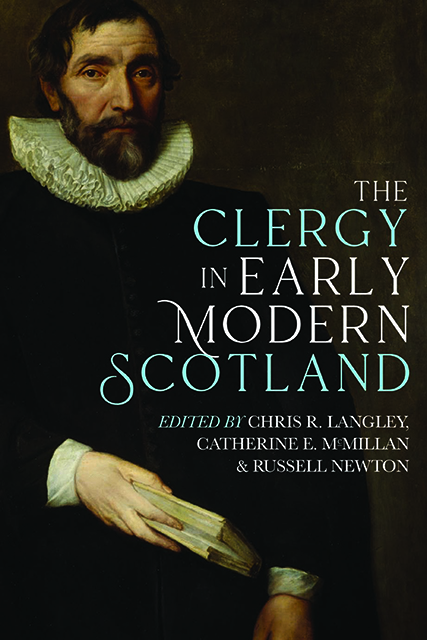5 - Anticlericalism in Early Modern Scotland?
Published online by Cambridge University Press: 14 January 2023
Summary
In the winter of 1634, John Colt, a mason from Perth, stood in the kirkyard of the parish of Kilspindie watching his workers repoint the church building. David Williamson, the sixty-year-old minister of the parish, approached and began discussing the work with Colt. The church was receiving several new bells for which Williamson had personally dispatched an order to Flanders as part of a renovation project. The minister’s conversation with the master mason quickly turned sour as he refused to pay for the workmanship, demanding that any costs should be covered by the parish heritors. A servant to the Laird of Fingask was working as a labourer on the project and reported that ‘many evell words’ were exchanged between both men and that Williamson, ‘beeing provoked after outrageous words’, swung a fist at Colt. Both men entered into a civil lawsuit regarding the payment of the money, while the landowners in Kilspindie warned the presbytery from intervening in what they considered a matter of civil, rather than ecclesiastical, law. Williamson’s legal battles with his neighbours continued for much of the decade, culminating in a protracted suit in 1639 when the minister built a monument dedicated to his dead wife – with ‘his armes and his wyves therupon’ – in the church of Kilspindie without asking the session or heritors for permission. After interrupting Williamson during sermon and subsequently entering a formal complaint, the Laird of Evelick – whose brother was minister at nearby St Madoes (and former Bishop of Dunkeld) – abused Williamson in front of the local presbytery, calling the minister a ‘false knave’. While the presbytery did not condone Evelick’s behaviour, it agreed that Williamson should demolish the ‘vaine glorious monument’ and instructed the minister to be satisfied with the much plainer inscribed stone he had also put above his wife’s grave. Williamson refused to act for the following month as he told colleagues that he had ‘something to object’ against their proceedings. During the delay, perhaps hearing of the affray involving John Colt several years earlier, no local mason could be found willing to remove the offending artifice.
There are two influential schools of thought that dominate historical assessments of lay-clerical relationships like those between Williamson and his neighbours.
- Type
- Chapter
- Information
- The Clergy in Early Modern Scotland , pp. 89 - 108Publisher: Boydell & BrewerPrint publication year: 2021



